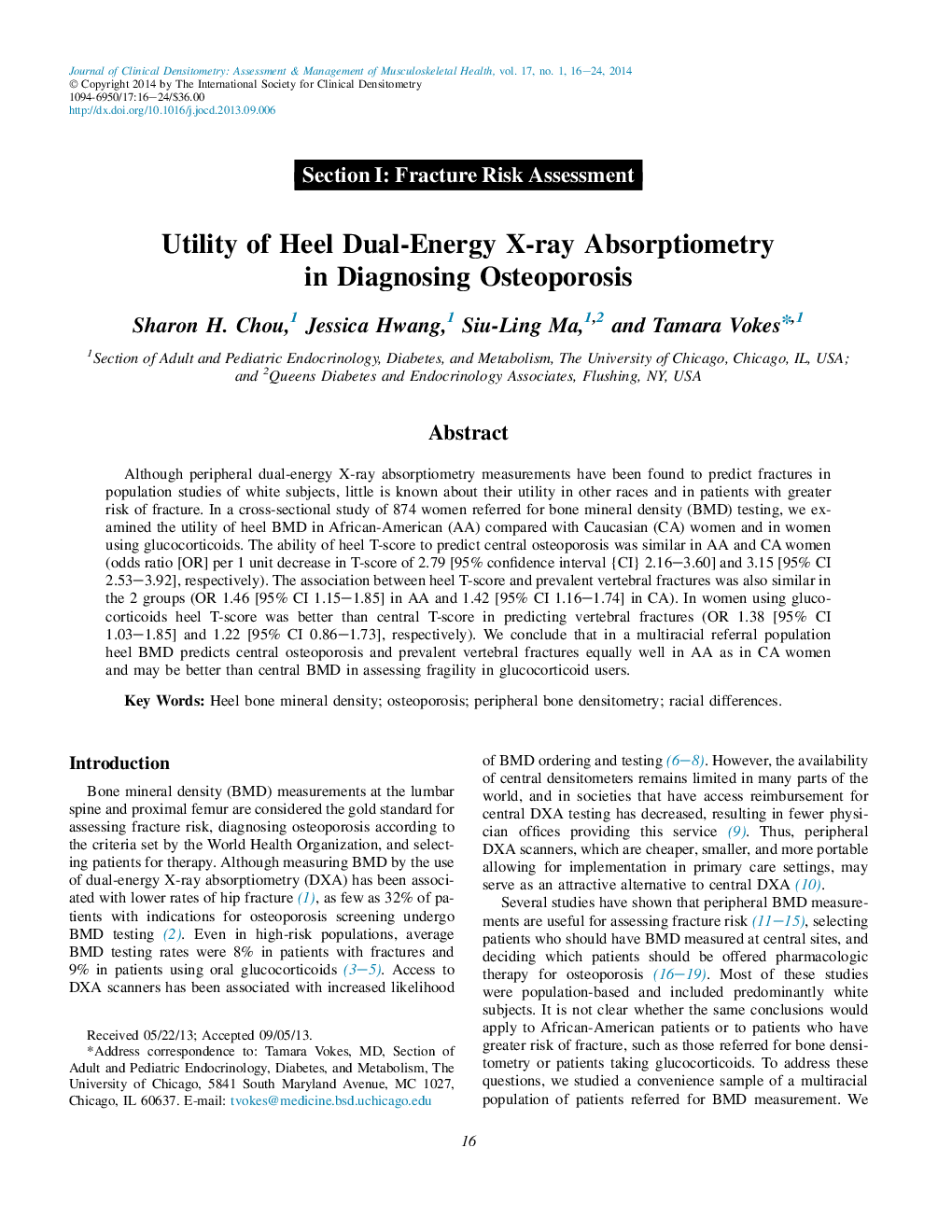| Article ID | Journal | Published Year | Pages | File Type |
|---|---|---|---|---|
| 10168070 | Journal of Clinical Densitometry | 2014 | 9 Pages |
Abstract
Although peripheral dual-energy X-ray absorptiometry measurements have been found to predict fractures in population studies of white subjects, little is known about their utility in other races and in patients with greater risk of fracture. In a cross-sectional study of 874 women referred for bone mineral density (BMD) testing, we examined the utility of heel BMD in African-American (AA) compared with Caucasian (CA) women and in women using glucocorticoids. The ability of heel T-score to predict central osteoporosis was similar in AA and CA women (odds ratio [OR] per 1 unit decrease in T-score of 2.79 [95% confidence interval {CI} 2.16-3.60] and 3.15 [95% CI 2.53-3.92], respectively). The association between heel T-score and prevalent vertebral fractures was also similar in the 2 groups (OR 1.46 [95% CI 1.15-1.85] in AA and 1.42 [95% CI 1.16-1.74] in CA). In women using glucocorticoids heel T-score was better than central T-score in predicting vertebral fractures (OR 1.38 [95% CI 1.03-1.85] and 1.22 [95% CI 0.86-1.73], respectively). We conclude that in a multiracial referral population heel BMD predicts central osteoporosis and prevalent vertebral fractures equally well in AA as in CA women and may be better than central BMD in assessing fragility in glucocorticoid users.
Keywords
Related Topics
Health Sciences
Medicine and Dentistry
Endocrinology, Diabetes and Metabolism
Authors
Sharon H. Chou, Jessica Hwang, Siu-Ling Ma, Tamara Vokes,
